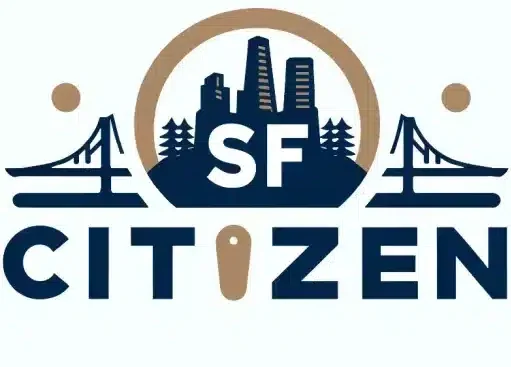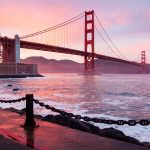The Emeryville Greenway, a vital pedestrian and bicycle path, spans 1.2 miles and connects the vibrant neighborhoods of Emeryville, Berkeley, and Oakland in the San Francisco Bay Area. This urban oasis not only promotes sustainable transportation but also offers a haven for recreational activities and community engagement.
In This Article
Key Points
- The Emeryville Greenway plays a crucial role in connecting various neighborhoods and promoting sustainable transportation.
- Proposition 84 Park bond significantly contributed to the development and enhancement of green spaces along the Greenway.
- The Greenway integrates public art installations, native landscaping, and bioswales, fostering an engaging and environmentally friendly urban space.
The Backbone of Urban Cycling and Pedestrian Pathways
As a pivotal component of the San Francisco Bay Trail, the Emeryville Greenway serves as a backbone for urban cycling and pedestrian pathways in the East Bay region. The Greenway seamlessly connects to the Berkeley 9th Street Bike Boulevard, Horton Street Bike Boulevard, and Oakland Mandela Parkway, creating a comprehensive network for active transportation enthusiasts.
The nearby Albany University Village and Buchanan Street Cycle Track further enhance the accessibility and appeal of the Greenway, promoting cycling and pedestrian activities in the surrounding areas.
Bridging Communities and Enhancing Connectivity
The South Bayfront Bridge plays a vital role in linking Emeryville to its neighboring communities, extending the reach of the Greenway. Peladeau Park, situated along the Greenway, serves as a vibrant community hub, offering a gathering space for picnics, relaxation, and social interaction.
The Emeryville Greenway is seamlessly integrated into the broader network of California State Parks and Recreation, showcasing the collaborative efforts to create accessible and interconnected green spaces.
Sustainable Design and Environmental Stewardship
The planning and development of the Emeryville Greenway are guided by sustainable design principles, prioritizing environmental conservation and stewardship. Bioswales and native landscaping along the Greenway contribute to stormwater management and biodiversity, aligning with the goals of the US Environmental Protection Agency.
By incorporating eco-friendly features and promoting sustainable transportation, the Greenway demonstrates Emeryville’s commitment to reducing its carbon footprint and fostering a greener future.
Recreational Activities and Community Engagement
The Emeryville Greenway offers a wide range of recreational activities for residents and visitors alike. Whether you enjoy dog-walking, picnicking, or playing ping pong, the Greenway provides ample opportunities for leisure and community engagement.
Local landmarks, such as The Broken Rack, add to the cultural richness of the Greenway, while public art installations scattered along the path create an immersive and visually stimulating experience for users.
Historical Significance and Educational Opportunities
The Emeryville Greenway holds historical significance, as it was once part of the Key System historical railway and the Southern Pacific Interurban Electric Railroad. These transportation systems played a crucial role in shaping the development of Emeryville and the surrounding areas.
The Greenway offers educational opportunities for visitors to learn about the region’s transportation history and its impact on urban development. The Proposition 84 Park bond has also contributed to historical preservation and educational programming along the Greenway.
Urban Cycling Infrastructure and Safety
The Emeryville Greenway boasts well-maintained infrastructure that supports urban cycling, ensuring a safe and enjoyable experience for cyclists. The connected boulevards and pathways are equipped with safety measures and initiatives to protect both cyclists and pedestrians.
As the demand for active transportation grows, the city of Emeryville continues to invest in future developments and improvements to cycling infrastructure and pedestrian pathways along the Greenway.
The Role of Community and Government in Greenway Development
The development of the Emeryville Greenway is a testament to the collaborative efforts of local communities, government initiatives, and partnerships. The involvement of residents in the planning and decision-making process has ensured that the Greenway reflects the needs and aspirations of the community.
Government initiatives, such as the Proposition 84 Park bond, have provided crucial funding and support for the enhancement of urban green spaces along the Greenway. Partnerships between the city of Emeryville, California State Parks and Recreation, and the US Environmental Protection Agency have further strengthened the Greenway’s development and sustainability.
FAQ
What is the Emeryville Greenway?
The Emeryville Greenway is a 1.2-mile pedestrian and bicycle path that connects the neighborhoods of Emeryville, Berkeley, and Oakland in the San Francisco Bay Area.
How does the Greenway contribute to sustainable transportation in the area?
The Emeryville Greenway promotes sustainable transportation by providing a safe and accessible route for cyclists and pedestrians, encouraging a shift away from car-dependent travel.
Can you describe some of the recreational activities available along the Emeryville Greenway?
The Greenway offers various recreational activities, including dog-walking, picnicking, and ping pong rental. It also features public art installations and community gathering spaces like Peladeau Park.
What historical landmarks can be found along the Greenway?
The Emeryville Greenway was once part of the Key System historical railway and the Southern Pacific Interurban Electric Railroad. These historical transportation systems played a significant role in shaping the development of the region.
How has Proposition 84 Park bond impacted the development of the Greenway?
Proposition 84 Park bond has provided substantial funding for the development and enhancement of green spaces along the Emeryville Greenway. It has also supported historical preservation and educational programming initiatives along the Greenway.

